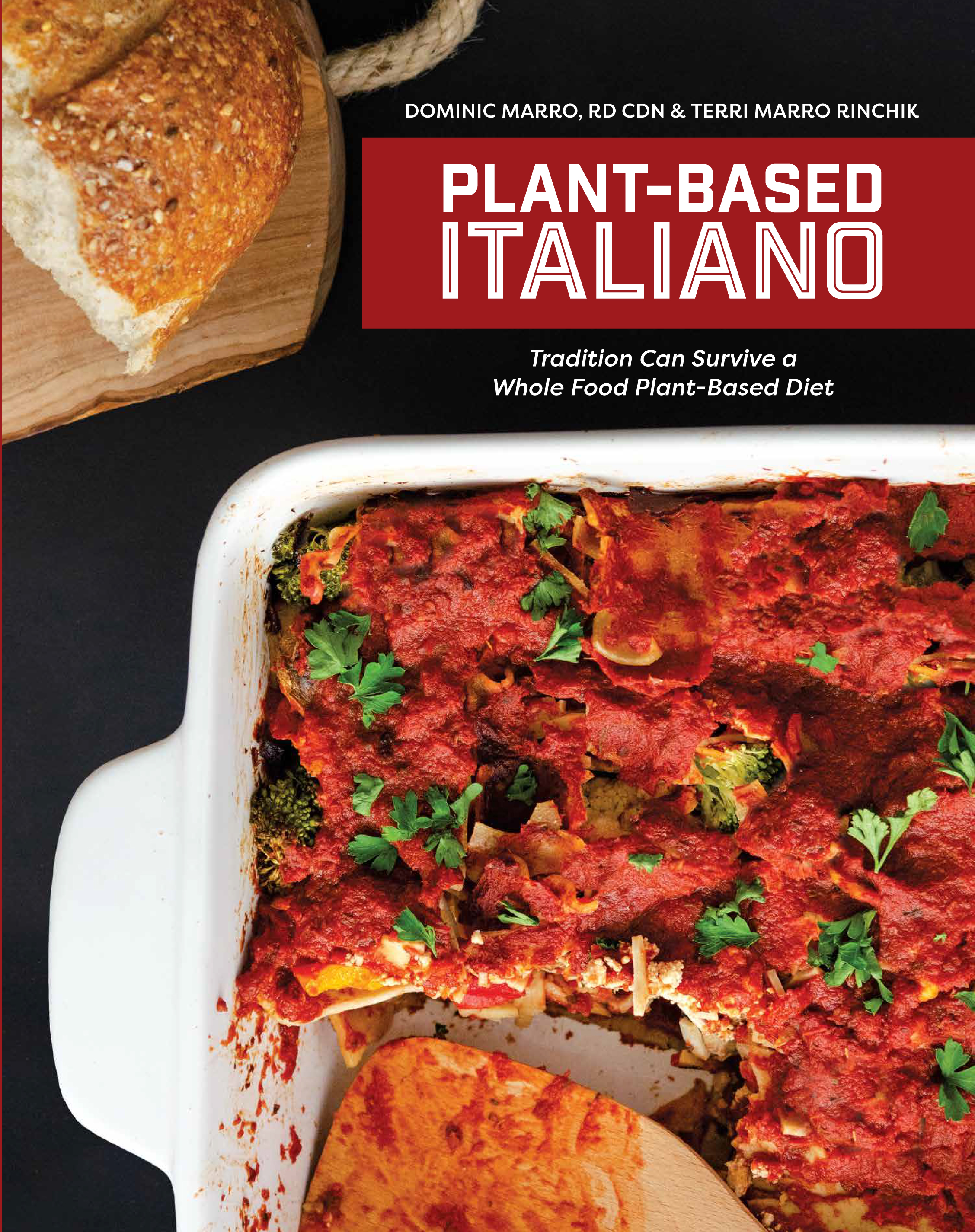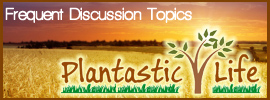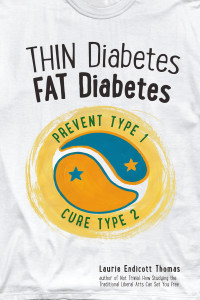Osteoporosis: There’s More to the Story than Calcium
One of the biggest concerns people have about transitioning to a WFPB diet is getting enough dietary calcium in order to build and/or maintain bone. Americans believe that the only way to get adequate calcium in the diet is by consuming cow’s milk and other dairy products. It’s not surprising that many have this belief as the dairy industry spends hundreds of millions of dollars annually trying to convince people that dairy consumption is necessary to build and maintain strong bones. The industry’s marketing genius and spending power have resulted in the majority of Americans having the bizarre belief that the mammary secretions of another mammal is essential to human health.
The fact is that there is much more to bone health than consuming adequate calcium. Overall dietary and lifestyle patterns are much more important to bone health than calcium intake alone. Anyone following a balanced WFPB diet and who exercises on a regular basis can build and maintain bone health for a lifetime.
Amy Joy Lanou PhD
After scouring the research on bone health, Amy Joy Lanou PhD wrote the book “Building Bone Vitality” In it she writes that the constant dietary focus on dairy and calcium consumption as a means to preventing and treating osteoporosis has failed. In her book she shares the science that convincingly shows that there is a better approach to promoting bone health. Most of the information in this article is taken from Lanou’s book .
Lanou addresses the “Calcium Paradox” which includes the following facts
- Hip fracture rates are highest in countries with high calcium and dairy product intake
- Countries that consume little or no milk, dairy or calcium supplements have fracture rates 50 to 70% lower than in the US.
Based on 10 years of research, she has concluded the following:
- Milk, dairy products, and calcium supplements do not prevent bone fractures
- We need a strategy that puts and KEEPS calcium and other nutrients in bones
Lanou looked at 86 studies of fracture risk to determine if dairy or supplemental calcium promote bone health. 39 of the 86 studies were funded by the dairy industry.
- 24 studies showed a reduced risk of fracture. 9 of these studies were funded by the dairy industry
- 15 studies were inconclusive. 8 of these studies were funded by the dairy industry
- 47 studies showed no reduced risk or an increased risk with higher intakes of milk or dairy. 22 of these studies were funded by the dairy industry
62 studies (more than 2/3 of the studies) show no clear benefit of consuming dairy or supplemental calcium in preventing bone fractures.
What about children’s bones?
A study of girls showed that daily calcium intake from 12-18 years, which ranged from 500 – 1500 mg/day, was not associated with hip bone density at age 20 or with total bone mineral gain during the teen years.
- However achievable levels of exercise and fitness did have a favorable effect on bone.
- Of 37 studies of dairy or dietary calcium intake, 28 studies found no relationship between dairy or dietary calcium intake and measures of bone health.
- In the remaining 9 reports, the effects on bone health are small and 3 were confounded by vitamin D intake from milk fortified with vitamin D.
- After conducting a meta-analysis,Witzenberg T et al concluded that “The small effect of calcium supplementation on upper limb Bone Mineral Density (BMD)is unlikely to result in a decrease in fracture risk of major public health significance either in childhood or later life. (-Witzenberg T, et al BMJ 2006:333:775)
So what’s going on here?
Maybe too much attention has been given to milk or dairy for promoting bone health
- Perhaps the overall dietary pattern matters more
Animal Protein and Bone Health
High animal protein diets are associated with high hip fracture rates
- As dietary plant protein increases, hip fracture rate decreases
- The World Health Organization’s (WHO) has noted that “the accumulated data indicate the possibility that the adverse effect of protein, in particular animal protein, might outweigh the positive effect of calcium intake on calcium balance.”
- The WHO Calcium Recommendations in countries with high fracture rates is 400 -500 mg/day. This recommendation is much lower than the 800 – 1600 mg/day recommended here in the US. The higher recommendation levels in the US take into account the excessive levels of animal protein and sodium in the average American’s diet.
How dietary pattern impacts calcium loss
- Diets high in animal protein increase calcium loss due to renal acid load.
Foods like meat and cheese create acidic ash which lowers the ph of blood.
Excessive amounts of sodium and caffeine are bone depleting
- Diets high in fruits and veggies help keep calcium in bone where it belongs. (due to high potassium and bicarbonate load.)
Fruits and veggies are associated with increased BMD and lower fracture rates. (based on prospective, longitudinal studies and cross sectional studies).
3 Keys to Bone Vitality
-
Choose a low-acid diet to keep calcium in bones
- Exercise to give bones a reason to strengthen and stay strong
- Fruits, vegetables and sunshine for 17 nutrients important to bone.
Adopting a low-acid eating style
Choose highly alkaline foods—fruits and vegetables—as the center of your meals. Consider snacking on dried fruits which are the most alkaline foods. (Don’t overdo dried fruits because of their relatively high caloric density)
- Add a modest number of servings of nearly neutral foods such as beans, soy products, pasta and breads.
- Balance moderately acid foods such as nuts and rice, with alkaline foods.
- Avoid or strictly limit highly acidic foods, such as fish, poultry, red meat and cheese
- It takes 5 to 7 cups of raw fruit or vegetables to balance the acidity in one modest sized turkey with provolone sandwich
Potential Renal Acid Load (PRAL) ranges of typical servings
|
Highly Alkaline |
Fruits and Veggies |
-4 to -9 |
|
Close to Neutral |
Beans, soymilk, pasta, bread |
+0.5 to +2 |
|
Moderately Acid |
Rice, milk, yogurt, eggs |
+2 to +4 |
|
Highly Acid |
Cheese, fish, poultry red meat |
+9 to +24 |
Exercise for bone building
Just as exercise improves muscle strength, exercise also strengthens bones.
- Choose weight bearing exercise such as walking, jogging, hiking, gardening, yoga, and dancing
- Improves balance which reduces the risk of falling
- 87% of the 86 studies done on exercise and fracture risk show a positive benefit
- Most show a 50% reduction in fracture risk between the most and least active participants. This is a very large reduction in fracture risk!
- The consensus of the research shows that 30 to 60 minutes of daily walking is enough exercise for strong bones.
Fruits, vegetables, and sunshine for 17 nutrients important to bone.
-
Strong, healthy fracture-resistant bones require 17 nutrients.
- Consuming lots of calcium without enough of the other nutrients is like trying to build a brick wall without mortar.
- The best sources of the other 16 nutrients: fruits, vegetables and sunshine.
The “Mortar” Nutrients
Vitamins – Vitamin C, Vitamin K, Vitamin A, Vitamin B6, Folic Acid, Vitamin D
Minerals – Boron, Copper, Fluoride, Magnesium, Manganese, Phosphorous, Silica, and Zinc
Macronutrients – essential fatty acids and protein (just not too much)
Vitamin D deserves special mention –
- Helps absorb calcium from the digestive tract
- Helps to move calcium from the blood stream into bone
- Main source of vitamin D = production in skin in response to sunlight
Bones are better served by:
-
Increasing fruit and vegetable servings (at least 6 servings)
- Avoiding or limiting protein from animal sources
- Exercising regularly (at least 30 minutes/day)
- Getting adequate sunshine or supplemental vitamin D
- Getting calcium and “mortar” nutrients from plant sources
Risks of setting calcium requirements too high
-
The effort and resources involved to increase calcium intake is not cost effective
- Focus on calcium and dairy has taken time and resources away from research on more promising dietary and lifestyle factors
- There may be safety issues with high calcium and high dairy consumption over time.
In summary, it’s not just what is absorbed that matters, it’s also what is getting into bone, what is staying in the bone and what is lost in urine.
A balanced WFPB diet can provide adequate amounts of calcium and “mortar” nutrients and ensures small amounts of dietary protein.
Getting at least 30 minutes of daily exercise and limiting dietary sodium and caffeine are also important for bone health.






 E Excerpt from Laurie Endicott Thomas’s amazing book Thin Diabetes – Fat Diabetes by clicking here!
E Excerpt from Laurie Endicott Thomas’s amazing book Thin Diabetes – Fat Diabetes by clicking here!
Speak Your Mind